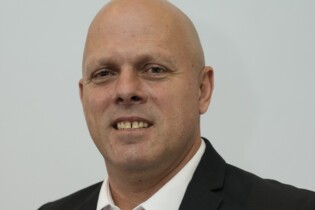 Irrespective of the capacity or the type of event within the MICE industry, there are conceptual components as well as logistical requirements which need to be undertaken above, and before, all others. These are the two basic, yet essential, components of the Professional Planner Standards (PPS) framework.
Irrespective of the capacity or the type of event within the MICE industry, there are conceptual components as well as logistical requirements which need to be undertaken above, and before, all others. These are the two basic, yet essential, components of the Professional Planner Standards (PPS) framework.
What comes first?
It is customary for the conceptual to be handled initially while design and marketing cover development aspects such as the statement of objectives, programme contents, environment, staging and production, marketing plan, promotion, public relations and sponsorships.
The logistical planning is inherently the tasks covered in the domains of administration and operations, which are financial and human resources. The actual site selection including the physical aspects of staging and production are also involved in logistical planning.
Know what you must do
In determining the predominantly administrative functions, the experienced and knowledgeable planner should be able to successfully complete the tasks outline by Domain 1 (see table 1).
With Domain 4 (see table 2) being all the operational elements, the planner once again will be required to concentrate on the sector and sub-sector for a complete understanding of the duties required to be discovered and/or knowledge updated.
It is through this framework that planners can formulate a path in which to grow and prosper with a powerful portfolio of evidence.
The way forward
The first minimum standards is available for the PPS in order to ensure the first signatories thereof can commence.
To receive updates and ongoing information regarding events relating to these standards, please register at miceacademy.biz.
Setting the foundations
Within the five domains of the PPS framework, the logistical planning requirements fall under the domains of administration and operations and the conceptual planning are part of the design and operations domains. The fifth domain of risk is inherent in both conceptual & logistical planning. The domains have been developed within the National Qualifications Framework on which the MICE Academy’s CPD online programme is based. All successfully completed Q&A tests will be issued with a certificate that will clearly indicate the domain, sector and sub-sector it covered.
Table One
| Domain 1 – Administration
SSETA 99055 & 6 – ID 11021 – Field 003 |
| 1.1. Financial
1.1.1. Develop budget 1.1.2. Establish pricing (for sponsors, exhibitors, attendees) 1.1.3. Monitor budget performance 1.1.4. Revise budget 1.1.5. Determine feasibility of meeting or event 1.1.6. Develop financial summary 1.1.7. Manage sponsorship and donor process 1.1.8. Manage grant funding process 1.1.9. Manage registration process 1.1.10. Manage exhibit sales process 1.1.11. Manage miscellaneous funding sources |
| 1.2. Human Resources
1.2.1. Develop selection criteria 1.2.2. Recruit staff and volunteers 1.2.3. Select best candidates and offer positions 1.2.4. Provide orientation 1.2.5. Provide training 1.2.6. Supervise staff and volunteers 1.2.7. Manage teams |
| 1.3. Information
1.3.1. Plan and administer information flow in accordance with administrative processes 1.3.2. Develop quality standards, policies and procedures |
| 1.4. Stakeholders
1.4.1. Identify, assess, and categorise stakeholders 1.4.2. Manage stakeholder activities 1.4.3. Manage stakeholder relationships |
| 1.5. Systems
1.5.1. Establish cash-handling procedures 1.5.2. Monitor cash-handling procedures |
| 1.6. Time
1.6.1. Undertake timelines in keeping with set deadline dates |
Table two
| Domain 4 – Operations
SSETA 99055 & 6 – ID 120376 – Field 003 |
| 4.1. Attendees
4.1.1. Develop admittance credential systems 4.1.2. Select crowd management techniques 4.1.3. Coordinate accommodations 4.1.4. Coordinate transportation |
| 4.2. Infrastructure
4.2.1. Observe and manage the overall (macro) operation from a practical aspect (as whether workable) |
| 4.3. Logistics
4.3.1. Establish functional requirements 4.3.2. Select decor and furnishings 4.3.3. Coordinate meeting or event signage 4.3.4. Manage protocol requirements |
| 4.4. Participants
4.4.1. Select and/or detail participants and manage process |
| 4.5. Site
4.5.1. Determine site specifications 4.5.2. Identify and inspect sites 4.5.3. Design site layout 4.5.4. Create logistics action plan for site set-up and take-down 4.5.5. Set-up site 4.5.6. Monitor site during meeting or event 4.5.7. Dismantle site |
| 4.6. Technical
4.6.1. Acquire staging and technical equipment 4.6.2. Install staging and technical equipment 4.6.3. Oversee technical production operation |







